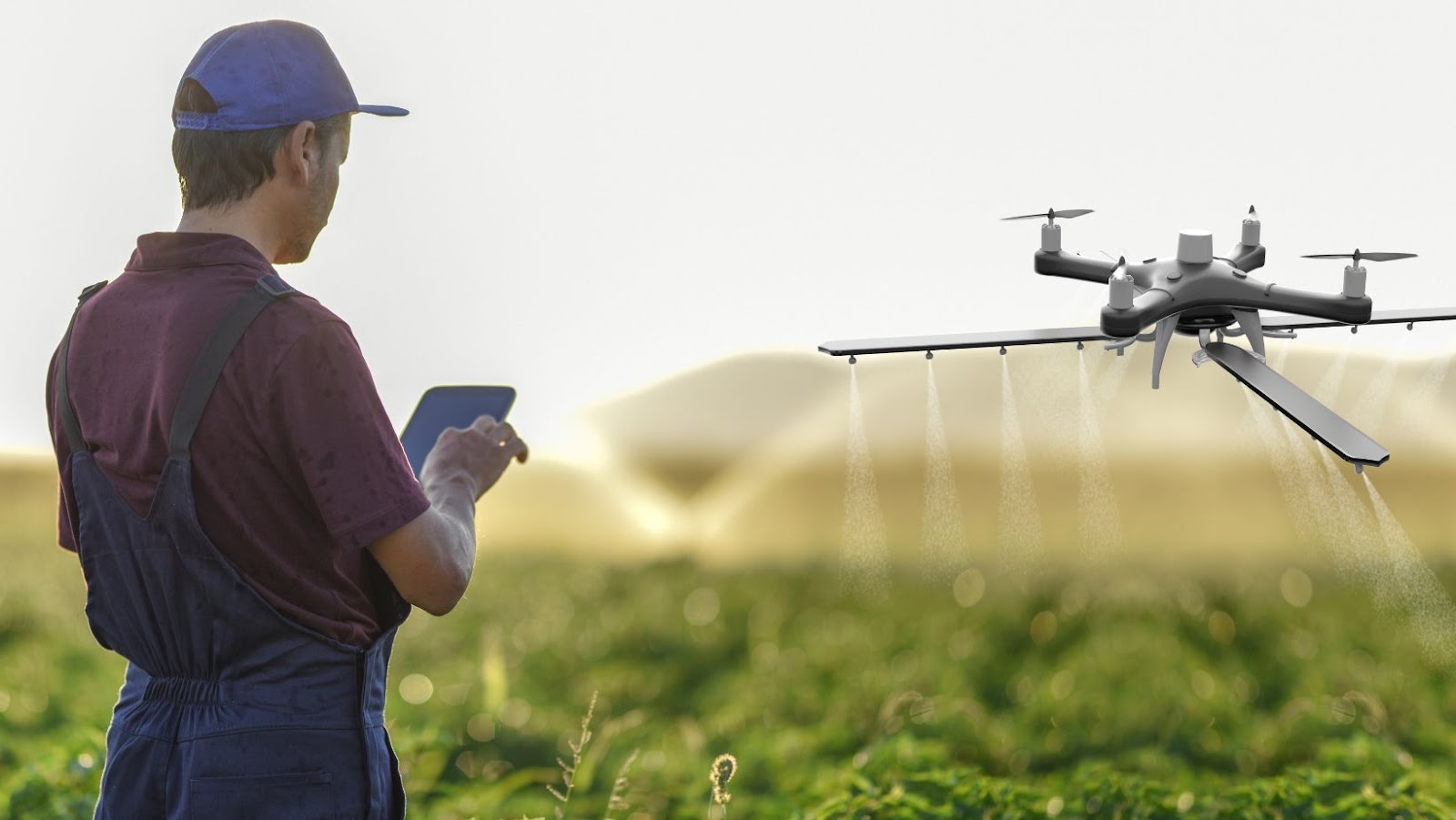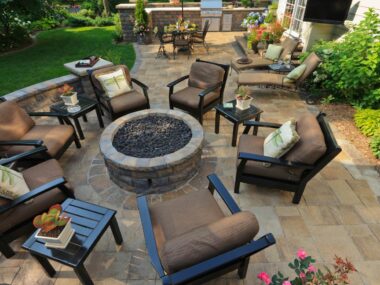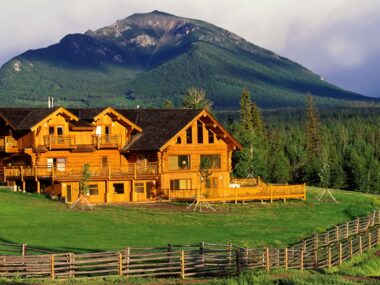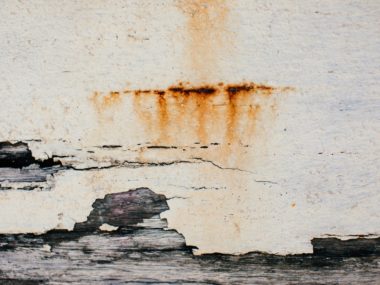DroneDeploy has just raised $50 million in a series D funding round and is planning to use the money to further develop its drone-based solutions to collect and analyse visual data. DroneDeploy produces automated drones and robots that capture data from aerial, land, and marine environments, giving customers a perfect source of visual data to make more informed decisions. Through this round of funding, the company plans to further develop its solutions to offer more accurate analytics.
Background of DroneDeploy
In 2013, DroneDeploy was founded with the mission to create an intuitive platform that allows customers in any industry to easily deploy drones. From its initial launch in 2014, the company has grown rapidly to become the leading provider of drone software solutions. DroneDeploy’s comprehensive platform enables businesses and individuals with aerial photography, mapping, surveying, and monitoring capabilities for various industries including agriculture, engineering, construction and more.
In addition to providing software solutions for drone deployment and autonomous data collection from aerial images and videos captured from UAVs (Unmanned Aerial Vehicles) or RPAS (Remotely Piloted Aircraft Systems), DroneDeploy also offers ground-based robots for patrolling unmanned areas such as quarries and industrial sites. These ground robots include robotic mowers or agricultural systems which enable autonomous monitoring of crops in agricultural settings or construction sites where human presence would be ill-advised or unsafe.
These robots are equipped with advanced sensors that are capable of capturing detailed 3D models of landscapes as well edited photos, videos and image to videos with highly detailed visual data which customers can then use to analyse their environment more effectively. This data can be used to track changes over time on construction sites, detect crop health in farming operations and monitor asset condition in industrial settings. The company’s end-to-end technology platform quickly processes vast quantities of visual data into easy-to-use insights, allowing teams to make informed decisions while taking action when required.
DroneDeploy Raises $50 Million to Collect and Aanalyse Visual Data With Drones and Robots
DroneDeploy is a leading provider within the drone technology industry. Their products focus on gathering visual data that can then be accurately translated into accessible, valuable information. DroneDeploy’s drones and robots are equipped with range of imaging, mapping, and autonomous technologies that can help provide real-time insights into a range of industries. DroneDeploy’s drones are robust and reliable systems capable of aerial mapping and surveying operations. By combining comprehensive intelligence systems, satellite navigation technologies (GNSS), wireless communication protocols, computer vision algorithms, camera payloads and more, DroneDeploy creates end to end solutions for customers to gain actionable insights from their visual data harvested by aerial sensors.
In 2013, DroneDeploy was founded with the mission to create an intuitive platform that allows customers in any industry to easily deploy drones.
Robots are being developed as an innovative solution to hazardous environments such as minefields or accident sites. By utilising cutting-edge feedback systems and onboard GPS tracking technology these robots help mitigate danger by gathering visuals from places humans cannot safely access. Additionally, with features such as autonomous navigation in urban areas, four wheel drive capabilities, obstacle avoidance systems and tactile sensors these robots can traverse difficult terrain safely. By fusing together their two most popular products—tethered drones and flanking robots—DroneDeploy has created a powerful autonomous data collection platform that’s used to aid organisations in any type of operation requiring imagery or data collection from areas not accessible through traditional methods.

DroneDeploy’s Drones and Robots
DroneDeploy, one of the leading providers of aerial data and analytics, recently announced that it has raised $50 million to further develop its technology and expand its product offering in the area of aerial data collection and analysis. This new funding round is a testament to DroneDeploy’s leadership in the area of data collection and automated analytics. This article will look closely at how DroneDeploy’s drones and robots collect and analyse visual data.
Types of Drones Used
DroneDeploy is a cloud-based software for aerial data collection. It is becoming increasingly popular in agriculture, construction, public safety, and renewable energy industries. DroneDeploy provides easy-to-use mission and flight planning tools to capture aerial data quickly and accurately. DroneDeploy’s drones range from small consumer-grade devices to large industrial aerial systems. This flexibility allows customers to choose the best system for their needs while optimising cost and performance. Below are the types of drones used by DroneDeploy:
Consumer drones: These affordable drones are designed for recreational use by individuals or hobbyists and typically range in price from a few hundred to one thousand dollars. Many of these drones can fly autonomously and have onboard cameras that can capture still or video images. Commercial solutions: Commercial grade solutions tend to cost more than consumer models but provide significantly more features including features such as long range communication, advanced sensors, real time data streaming, automated flight control options, etc. Popular commercial solutions from DJI include the Inspire 1 Professional series, Matrice 100 Pro+ Series, Mira S800EVO Series and Matrice 600 Pro Series.
Robotic planes: While not strictly a drone (because they require a runway for takeoff), robotic planes can offer enhanced performance including longer flight times up to several hours due to their greater Wing area as compared with multi-rotor configurations Robotic planes tend to be larger than traditional quadcopters or hexacopters, so they can carry heavier payloads with expanded sensor arrays contributing higher quality data sets. Examples include the AirMule 1700 cargo drone from Israel’s Urban Aeronautics or medium sized offerings like Wing Loong II from China Aerospace Science & Technology Corporation (CASC). Multi-rotor Drones: The most popular form of unmanned aerial vehicles (UAV) today are multi-rotor copters ranging in size from small ‘toy’ versions typically using brushed motors right through much larger professional grade platforms using brushless motors that provide increased stability in challenging conditions such as windy weather.
Types of Robots Used
In the digital transformation era, drones and robots are helping businesses build their data collection capabilities. For example, DroneDeploy’s drones and robots are helping to collect valuable 3D mapping visual data for various applications including construction, insurance claims, surveying, energy infrastructure assessment and urban planning. DroneDeploy offers a comprehensive suite of drone and robot solutions. In the realm of land-based robotics, autonomous ground vehicles (AGVs) can negotiate terrain and obstacles autonomously to collect visual data faster than manual methods.Terrestrial robots used include:
- Tracked Robots: Tracked robots feature four tracks for stability over dynamic terrain such as sand dunes or snow drifts. They typically have a range of nearly one kilometre with operating speeds up to 8 kph (5 mph). Due to their large track area, tracked robots can transmit more visual data than wheeled options.
- Wheeled Robots: Wheeled robots come in two configurations — inline wheels or differential drive wheels. The largest manufacturers offer models capable of travelling up to 20 kph (12mph). Differential drive wheeled bots are fast in comparison but may not be able to handle terrain like sand or mud as well as other types of vehicles due to low ground clearance between the wheels And narrow/shallow tires
- Quads :This type features four legs equispaced around the perimeter to simplify navigation across challenging terrains while increasing stability on uneven surfaces. Quad bots typically travel at 5 kph (3 mph). They are especially useful for steep surface studies where track based designs would find it difficult to gain traction due to lack of sufficient downward force
Additionally, newer drones can take off from water safely, increasing the potential applications for this technology and allowing operators access new areas that had previously been restricted from air space via traditional aircrafts .
Benefits of Using Drones and Robots
Drones and robots are increasingly becoming a part of the visual data collection process, offering many advantages to organisations looking to broaden their data analysis capabilities. Not only do they allow companies to collect more accurate data from various locations, but they can also help reduce labour costs associated with manual data collection. By using drones and robots for data collection, organisations have access to high-resolution imagery and detailed mapping capabilities. This information can be used for terrain modelling, asset tracking, construction planning and surveying applications. Companies that use drone and robot technology also benefit from an improved accuracy rate when compared to manual or handheld methods. Additionally, drones and robots can quickly access hard-to-reach areas that a human may not be able to reach safely or economically.
In the digital transformation era, drones and robots are helping businesses build their data collection capabilities. For example, DroneDeploy’s drones and robots are helping to collect valuable 3D mapping visual data for various applications including construction, insurance claims, surveying, energy infrastructure assessment and urban planning.
Robots offer additional benefits when it comes to collecting visual data. They can analyse large datasets in less time than humans since they don’t need breaks or meal times like humans do. Robots can also identify objects easier than humans because of their faster reaction times and ability to sample multiple views of an object at once for comparison purposes. Finally, robotic arms can reach higher precision accuracy levels due to their steadier grip on items being handled or scanned at longer distances that weigh less than a standard hand-held scanner scan handle. Using droneDeploy’s drones and robots helps companies efficiently collect detailed visual data without compromising accuracy or safety for personnel in the field. By investing in such technology, organisations can save time, energy costs and resources while quickly and effectively gathering high-quality images from previously inaccessible areas with limited natural resources.
DroneDeploy’s Visual Data Collection Process
DroneDeploy recently raised $50 million to help expand its visual data collection process with a combination of drones and robots. This collection of data is helping to create detailed 3D maps and models to help with construction, infrastructure, and other projects. This article will discuss the technology and process behind DroneDeploy’s visual data collection process and how it’s being used.
Steps Involved in The Process
The process by which DroneDeploy harvests visual data is simple, yet effective. It starts with launching one of its drones or robots into the air or onto the ground. Once up in the air, the drone collects aerial images using advanced computer vision algorithms representing key features of what it sees. Then, on the ground, controlled by autonomous robots, it snaps high-definition images from many different angles and lighting sources. From there, these are compiled to form a comprehensive picture of whatever has been photographed or recorded.
As the images are being collected, they are then stored on DroneDeploy’s secure cloud platform for secure storage and integration with existing enterprise systems. Then a skilled team of engineers analyses and processes visual data over weeks to create accurate 3D models and generate reports and task lists involving land surveys, construction projects and infrastructure maintenance checks among other uses.
The process involves three main steps: gathering raw data (aerial imaging), analysing this data (using computer vision algorithms), and advertising a highly accurate 3D model that can be used in various industries such as construction, engineering and infrastructure development among others. The final step is essentially advertising this model to potential customers where they can request custom task lists which include legal aerial imagery for building plans or inspections; point cloud-constructed orthomosaic maps providing detailed aerial view of buildings; precision agriculture – digital soil scanning & crop health analysis; thermal imaging for temperature-sensitive components; as well as panoramas for easy viewing access from any angle through virtual reality technology if needed.

How The Data is Analysed
DroneDeploy’s systems include features that analyse the raw data from drones and robots to ensure the highest accuracy and longevity of visual data. First, all images are run through a verification system that checks for any image quality or accuracy errors, such as duplicate files or incorrect geographic coordinates. Once verified by the system, the images can then be further analysed and manipulated to produce different map products. DroneDeploy’s system can quickly identify patterns and textures that are present in images captured by drones or robots and generate colour-coded maps to better illustrate these features. This allows users to quickly visualise changes over time or compare one part of their property with another.
The data is also processed at an aerial level using specialised computer vision algorithms. This allows drone images to be sharper even when taken from great distances and produce more detailed annotations such as distance measurements between objects in the imagery. For example, DroneDeploy can identify areas where vegetation has grown over time for more accurate environmental asset management or detect areas that may need repairs due to flooding.
To further improve aerial data accuracy and provide site-specific insights, drone pilots employ sensors from different industries like APIs from Internet of Things (IoT) devices like GPS antennas, lidar scanners, thermal cameras etc., which allow drones to collect higher resolution datasets with increased detail compared to traditional table top satellites or planes (SAS) terrain mapping technologies. The collected data is then analysed for valuable insights about a certain space before finally being used in reports created by users onsite with the help of integrations such as Tableau®, ArcGIS®, Esri®, etc., which allow them to easily compile results based on customizable criteria set by the user while giving them an augmented understanding of their site without ever having step foot on it – literally taking “visual” feedback provided by modern technology another step further!
DroneDeploy’s Impact on The Industry
DroneDeploy has recently raised $50 million in venture funding to create a platform that utilises drones and robots to collect and analyse visual data. By using these devices, DroneDeploy can obtain data that would otherwise be difficult to obtain. As a result, drones, robots, and other technologies have drastically changed the way visual data is collected and analysed in the industry. In this article, we will discuss the impact of DroneDeploy’s technology on the industry and how it revolutionises data collection.
Market Opportunities
From large-scale mapping in construction engineering to oil and gas rig explorations, DroneDeploy’s aerial platforms are providing an evolutionary leap in how businesses capture and manage visual data. Its powerful features make it easy to see why DroneDeploy is a leading provider in the market. By leveraging its platform, customers can access features like pre-built templates and integration with existing infrastructure, making data collection, storage, and analytic capabilities more streamlined. The software updates also include improved mission planning and automated asset management tools that make capturing data more efficient.
But by far the biggest market opportunity that DroneDeploy provides lies in its automation capabilities, allowing businesses to collect valuable visual data from inaccessible parts of their sites without sacrificing safety or quality. This helps companies reduce costs for inspection jobs and analyse more environments for greater accuracy of target intelligence information.
Through its range of advanced sensors, DJI Phantom drones equipped with autonomous flight capabilities help users track changes fast over large areas easier than ever before – enabling visualisation of small objects within seconds instead of hours with traditional methods like manual survey teams. This ensures teams can always be up-to-date on the work being done in dynamic conditions like scanning through snow or heavy rain during active construction projects. Overall, DroneDeploy has positioned itself as a comprehensive aerial imaging platform provider offering market-leading technology solutions that have enabled organisations worldwide to easily extend their current operations while driving real value from digital transformation initiatives.
Impact on Other Industries
Drones and robots collect visual data in numerous other industries and have revolutionised how businesses operate. For example, before DroneDeploy’s launch, aerial photos of large areas or 3D models were expensive and time-consuming to produce. Businesses can now save time, money, and resources by gathering real-time insights at scale using drones and robots.
DroneDeploy has quickly established a reputation for being a reliable partner and valuable service provider for BigAg, construction trade associations, government agencies, real estate giants, oil & gas firms, insurance companies and infrastructure organisations. Additionally, it is used by many aerial surveyors to generate quick turnaround of high resolution aerial imagery that can be shared digitally to customers around the world as easily as emailing an attachment.
The impact that DroneDeploy makes on other industries includes providing an unlimited source of newly generated data that can be used for analysis and decision making without ever having to leave the comfort of your own office. For example, when agribusiness uses DroneDeploy cameras in fields that generate accurate production estimates from photos taken during different growth stages which help inform decisions about fertilising crops; construction managers can interpret building conditions from drone videos; city planners track real-time project development from remote locations; miners locate fissures or changes on terrain with 3D maps — all saving time and creating increased safety in comparison to manual inspections or traditional surveying methods.
Moreover, DroneDeploy’s aircraft have been approved by aviation authorities worldwide, meaning businesses have fewer regulatory hurdles when deploying drone technology globally. This makes this tech more accessible than ever before — freeing up resources while dramatically lowering the cost of projects completed with airborne entities over any size area on earth quickly with minimal risk – making data never so readily available as it is today!

Conclusion
In conclusion, DroneDeploy’s drones and robots are revolutionising how visual data is collected and analysed. By allowing non-expert users to map, inspect, and analyse their environments in real-time, DroneDeploy is helping to democratise visual data collection and analytics. As it continues to innovate, DroneDeploy’s ability to collect and analyse visual data with drones and robots presents new opportunities for businesses to improve their operations, unlocking new possibilities and value.
Summary of DroneDeploy’s Drones and Robots
DroneDeploy’s drones and robots are designed to quickly, efficiently, and safely collect large amounts of aerial and terrestrial data. DroneDeploy’s fleet includes consumer drones and specialised aerial robots, transporting payloads such as sensors, cameras, lasers and other hardware. Additionally, they provide data platform services which allow customers to manage their data from the drones in an automated way. This includes accessing raw data from the drone or robot mission files and analysing and visualising the generated data for easier interpretation.
The comprehensive suite of products offered by DroneDeploy allows users to leverage high-quality visual information for diverse purposes. For example, surveyors can utilise this data for topographic mapping projects; conservationists can use it to measure land encroachment; industries can use it for conducting infrastructure inspections; farmers can apply this technology for precise crop monitoring and other agricultural needs; cities can leverage it for public safety operations (i.e., public amenities assessment). Ultimately, DroneDeploy’s suite of products reduces costs while simultaneously providing timely solutions with intuitive user interfaces that simplify complex tasks associated with collecting visual data.
Summary of DroneDeploy’s Visual Data Collection Process
DroneDeploy’s drones and robots are an effective way to collect aerial visual data for a variety of applications. Using drones and robots, imagery can be captured from both ground level and in the air. Ground-level imagery can be used to create 3D maps used for various purposes such as surveying and agricultural monitoring. DroneDeploy also provides aerial video footage that can be used for asset tracking, pipeline inspection, disaster relief efforts, construction site monitoring, and more.
Using Flight Polygons within its platform, DroneDeploy can map out flights for both the drone and robot to cover large areas with minimal effort. Flight lines can also be run between survey points at a height determined by the user to capture detailed images of terrain or structures. The platform then compiles all these images into an organised stitch mapping, including uncorrected RGB images or orthomosaics, including post-processing corrections such as georeferencing and image enhancement.
Flight path planning can also be customised with no-fly zones based on user requests to ensure safe operation of aircrafts. Additional features within the platform provide analytics that allow users to efficiently review their flight performance including distance travelled per mission for individual crafts as well as overall performance analytics related to area covered by specific crafts/platforms on a particular range mission day or seasonally over time helping users optimise fleet performance and maximise ROI moving forward on future projects.
tags = drone technology, platform for commercial drone operators, drone captured professional grade imagery, dronedeploy company, drone 50m 142msawersventurebeat, drone dronedeploy 50m 142msawersventurebeat, drone dronedeploy 50m series 142msawersventurebeat, dronedeploy series 142msawersventurebeat, dronedeploy platform, mapping application, distance measurig tool, area measuring tool






